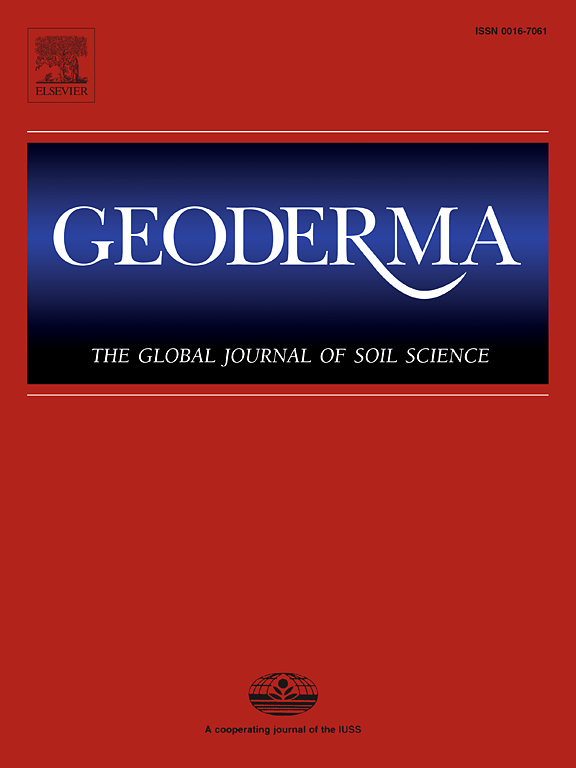将土壤空间邻域信息纳入数字土壤制图
IF 5.6
1区 农林科学
Q1 SOIL SCIENCE
引用次数: 0
摘要
数字土壤制图(DSM)正在改变我们了解和管理土壤资源的方式,它提供了应对环境挑战所必需的高分辨率时空土壤信息。环境协变量的整合提高了土壤制图的准确性,而邻近土壤样本数据的潜力却在很大程度上被忽视了。本研究将土壤空间邻域信息(SSNI)作为一种新方法引入,以增强空间模型的预测能力。利用来自 LUCAS Soil 和 Meuse 的两个开放数据集,我们的研究结果表明,加入 SSNI 提高了随机森林模型在绘制土壤有机碳密度图(降低了 3.1%的 %RMSE)、镉图(降低了 3.6%的 %RMSE)、铜图(降低了 5.9%的 %RMSE)、铅图(降低了 11.5%的 %RMSE)和锌图(降低了 7.4%的 %RMSE)方面的准确性。与采用缓冲距离或倾斜地理坐标建模相比,SSNI 在 LUCAS 土壤和默兹河数据集方面的表现也更好。这项研究强调了 SSNI 在通过捕捉邻近信息改进数字土壤地图方面的价值。利用 SSNI 可以在土壤管理方面做出更明智的决策,其在其他学科的潜在适用性也有待在未来的研究工作中进行探索。本文章由计算机程序翻译,如有差异,请以英文原文为准。
Including soil spatial neighbor information for digital soil mapping
Digital soil mapping (DSM) is transforming how we understand and manage soil resources, offering high-resolution spatial–temporal soil information essential for addressing environmental challenges. The integration of environmental covariates has advanced soil mapping accuracy, while the potential of neighboring soil sample data has been largely overlooked. This study introduces soil spatial neighbor information (SSNI) as a novel approach to enhance the predictive power of spatial models. Utilizing two open-access datasets from LUCAS Soil and Meuse, our findings showed that incorporating SSNI improved the accuracy of random forest models in mapping soil organic carbon density (reduced %RMSE of 3.1%), cadmium (reduced %RMSE of 3.6%), copper (reduced %RMSE of 5.9%), lead (reduced %RMSE of 11.5%), and zinc (reduced %RMSE of 7.4%). Compared to the inclusion of buffer distance or oblique geographic coordinates for modelling, SSNI also performed better for both LUCAS Soil and Meuse datasets. This study underscores the value of SSNI in improving digital soil maps by capturing the neighboring information. Embracing SSNI could lead to more informed decision-making in soil management and its potential applicability across other disciplines also remains open for exploration in future research endeavors.
求助全文
通过发布文献求助,成功后即可免费获取论文全文。
去求助
来源期刊

Geoderma
农林科学-土壤科学
CiteScore
11.80
自引率
6.60%
发文量
597
审稿时长
58 days
期刊介绍:
Geoderma - the global journal of soil science - welcomes authors, readers and soil research from all parts of the world, encourages worldwide soil studies, and embraces all aspects of soil science and its associated pedagogy. The journal particularly welcomes interdisciplinary work focusing on dynamic soil processes and functions across space and time.
 求助内容:
求助内容: 应助结果提醒方式:
应助结果提醒方式:


